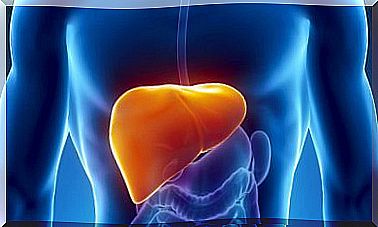What Is Thoracic Outlet Syndrome?
The thoracic outlet syndrome comprises a series of disorders in which the blood vessels and nerves appear compressed in a body region. We are talking about the space between the first rib and the clavicle.
Types of thoracic outlet syndrome
We can differentiate several subtypes within this pathology, according to the characteristics they present:
- Vascular. The disorder can be venous (one or more veins are pinched) or arterial (if one or more arteries are pinched).
- Neurogenic. In this case, it is the nerves that are being squeezed between the two bone structures.
- Not specific or indeterminate. On the other hand, the medical team may be unable to pinpoint the cause of the disturbance affecting the subjects.
Symptoms of thoracic outlet syndrome
We can mention a series of alterations or symptoms associated with each subtype of the pathology:
1. Vascular thoracic outlet syndrome

The added pressure on the blood vessels alters their function so that certain body regions do not receive the usual blood flow. For example, the following complications may develop:
- Paleness and even bluish hue on the altered arm.
- Feeling of weakness and numbness both in the neck and along the injured limb.
- Palpitations or the perception of a strong pulse in the region where the damaged blood vessels are located.
- Clots may also form in this region of the body.
- Difficulty or presence of problems to take the pulse in the wrist of the arm modified by the disease.
2. Neurogenic thoracic outlet syndrome
- Gilliatt-Sumner hand and feeling of weakness in this limb.
- Pain or discomfort that can vary in intensity and can be located in the neck, shoulders and on the limb that affects the syndrome.
Causes of thoracic outlet syndrome

So far, specialists have been able to identify a series of causes that can trigger this problem. Thus, among the most common we can point out:
- Overweight or obese The added body mass that the joints must support overloads them and they can become damaged.
- Postural hygiene or sloppy ergonomics. Likewise, we must pay attention to the positions our body maintains to avoid damaging the joints that support us.
- Suffer trauma or injuries in the body region where the pathology takes place.
- Being pregnant, since the mother’s body undergoes a series of modifications during the baby’s evolution.
- Repetition of certain gestures or activities. During the working day and the practice of certain sports modalities this fact can occur. Therefore, the structures involved in such movements can gradually wear out.
- Congenital problems. Some of these alterations affect the internal structure of the subject, such as generating an added rib prior to the first.
Diagnosis of thoracic outlet
To identify this pathology, the corresponding medical team can carry out both a physical examination and other medical procedures.
Thus, during the physical examination the symptoms that the subject may suffer are checked and their clinical history and the existence of antecedents are checked. Relatives of the person who have suffered from the particular disorder are called antecedents.
On the other hand, other tests such as blood and urine tests can be performed along with internal imaging. For example, they can be formed by ultrasound, X-ray, magnetic resonance imaging (MRI) etc.
A nerve conduction study that looks at the nerve transmission or function of certain nerves that may be damaged may also be used.
Treatment of the syndrome

Currently, there is no definitive cure for this disorder. However, a series of treatments have been developed that greatly alleviate the symptoms and improve the quality of life of the subject. For example:
- Physiotherapy sessions.
- Analgesic, anti-inflammatory drugs, etc.
- Surgical interventions (in the most serious cases).
Ultimately, the most effective treatment for this pathology is symptomatic, but not curative. In any case, if you suspect that you may suffer from any of the symptoms mentioned above, we recommend that you consult your medical team as soon as possible.









